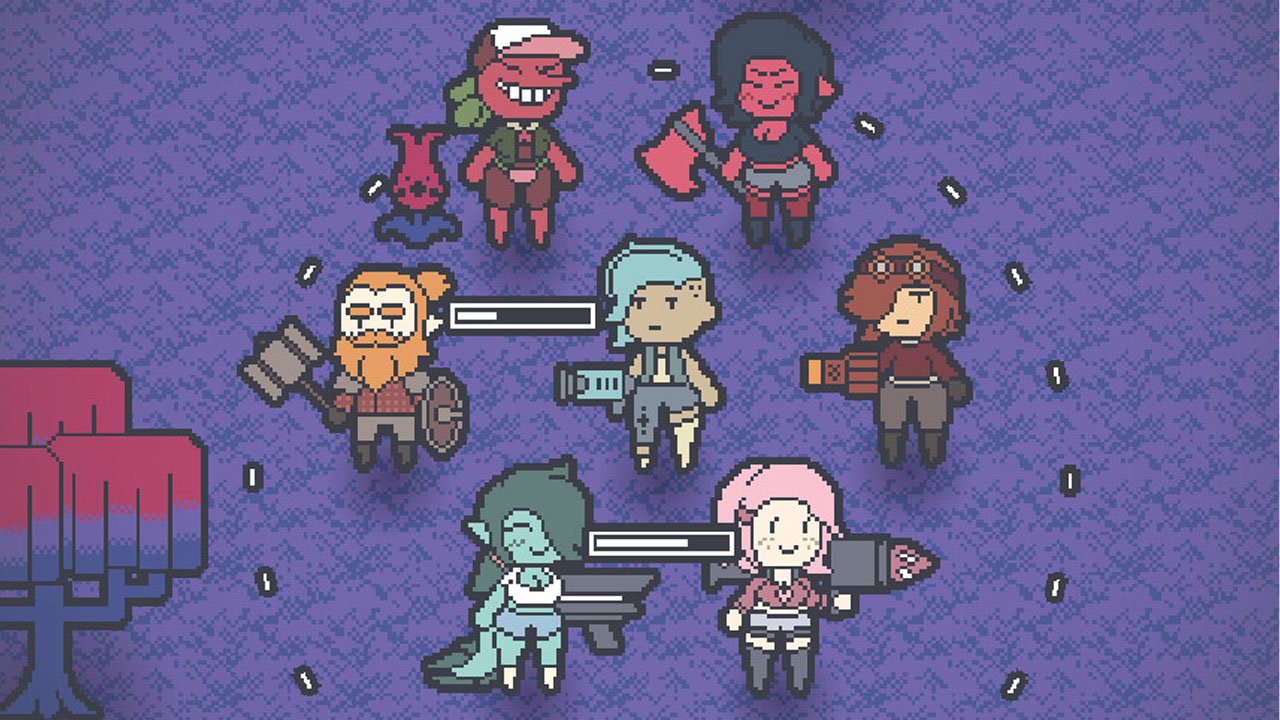Parts wearing out at inconvenient times? Worried your check engine light will turn on during a deep zone mission? This guide details the (somewhat vauge) information i’ve gathered about gauging, and predicting, a part’s wear and tear so you don’t go out into the zone with a part that about to fail on you.
Część 1: Wear and Tear
As we all know from the absolute “literary classic” Minecraft: Tryb opowieści, nothing built can last forever. This is true for your beater station wagon as well, which will, over time, develop special status effects indicated by the usual status effect prism with an X in the middle, telling you that it’s time to replace em, as seen in the screenshot below. If you see this symbol as a status effect on any part on your car, that means its time for a replacement.
Jest, that I know of, no good way to fix any status effect of this sort, and once it shows up the part will start taking much higher damage from natural sources, before eventually breaking entirely. In order to prevent this from ruining a longer run, such as deep zone runs, its best to keep track of when and how it happens. In that respect I have one singular piece of advice.
Część 2: Predicting Part Failures
60 Miles.
That number isn’t really all that helpful from first glance, but let me explain.
From what I’ve gathered, the system for determining when a part fails is mostly determined via the amount of miles you’ve driven with that part on your car. In that respect, I’ve found that in most cases, the threshold required for a regular, steel part to go fragile is, as previously stated, 60 mile driven on that part.
I’ve not tested it, but if for some reason you are driving on crude parts, they likely wear out far faster. Not super helpful, as i don’t really see why you’d drive on crude parts unless you are in the middle of bum**** nowhere without a door or something and needed something quick.
Keeping track of that stat is generally pretty easy, just grab the part off your car, go into your inventory, find that part, and hit V while mousing over it.
This little bar will show up, and right at the rightmost section of that bar is the amount of miles you’ve driven on it.
If that number is over 60, its time to replace the part.
Oczywiście, this isnt a hard and fast rule. Parts that don’t get hit as often (Side rack parts, stuff you generally dont use) can apparently last longer, but other parts (such as doors, panele, bumpers) that take the brunt of the damage when hit tend to go out sooner. I’m afraid i’ve yet to get more information on this one, but it is generally safe to assume when a part passes that threshold it is susceptible to wearing out.
MAJOR EXCEPTION: This is something ive just found, and is also fairly spoiler-y, so i will be putting this in spoiler text.
Olympium parts take longer to wear out. I’ve got 3 parts on my car installed 77 miles ago that arent gone yet, and i honestly do not know if olympium even goes fragile at all. I’ll update with more information when i get the chance. It may also be prudent to keep track of parts installed at the same time, so you can check from a glance which parts need replaced. Oczywiście, that’s more for convenience’s sake, do what you will with that information.
Część 3: Dread it, Plan for it…
…But it comes all the same. Part failures WILL happen to every part you have on your car eventually, its just a matter of time. Stąd, plan for that failure.
With the knowledge that the part is going to become less useful at a certain time, you can accurately plan for it. W tym wypadku, there’s 3 things that can really be done:
1: Zostaw to w spokoju. Fragile parts aren’t a certain end to the run they occur on, but can be pretty heavily detrimental. If you just don’t want to deal with it, you can pretend the check engine light doesn’t exist and drive until they break. Osobiście, my OCD-ridden brain wouldn’t let me drive on parts I know can fail and cost me a run at a moment’s notice, but you do you.
2: Let it go fragile, then scrap it. Just because a part is fragile doesn’t mean it can’t be scrapped. You will get reduced gains from scrapping it (I generally assume something like 75% of the parts that go into it), but letting it go fragile before getting rid of it isn’t a bad idea if you are okay with procrastinating on it a bit.
3: Replace that part the second you find it. To jest, teoretycznie, the most efficient strategy. You get more scrap from a part that’s not already broken, and although it may be annoying to constantly check for it, you’ll get a peace of mind from keeping your wagon in tip-top shape.
Część 4: Wniosek
All parts wear out eventually, there’s nothing that can be done about that. Planning for it is the best way to prevent getting caught out and killed because you weren’t ready for your Ion Shield or LIMpulse to fail in the middle of a deep zone mission.
I have heard rumors that a part going weary is not the end. Supposedly, there is a way to bring a part back from the grave and fix these status effects. Niestety, i’ve yet to confirm if there is a way and don’t really have the parts on hand to check. I don’t know if its possible. Jeśli to jest, let me know in the comments, I’ll try to keep this guide updated for as long as I can.
Ogólnie, hopefully this has provided some information on a game mechanic I found to be important to understand, but that wasn’t ever really explained. Thanks for spending your time reading my (pretty poor quality) przewodnik, and hopefully you never lose a run to a worn part again!






